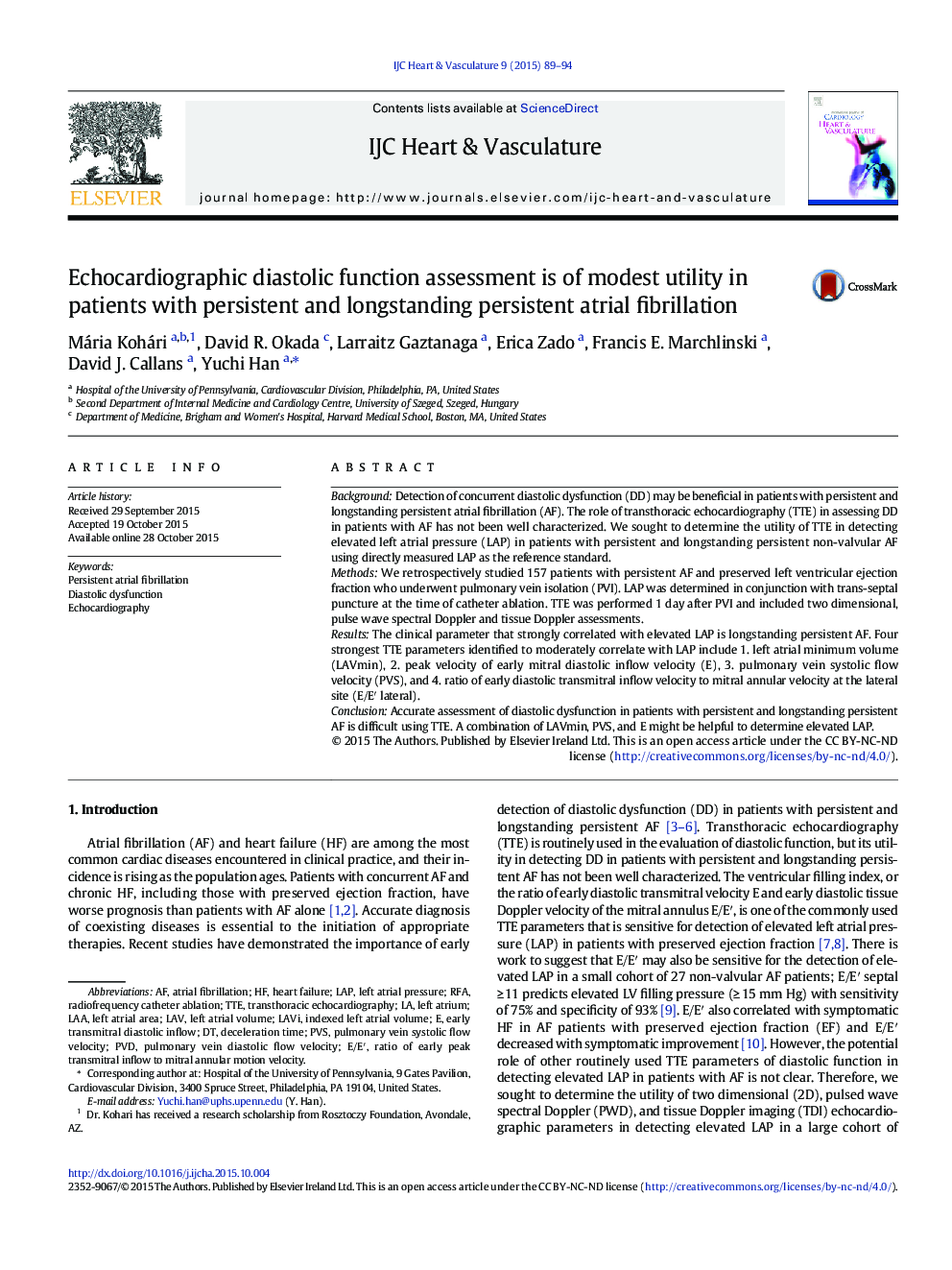| Article ID | Journal | Published Year | Pages | File Type |
|---|---|---|---|---|
| 2926974 | IJC Heart & Vasculature | 2015 | 6 Pages |
BackgroundDetection of concurrent diastolic dysfunction (DD) may be beneficial in patients with persistent and longstanding persistent atrial fibrillation (AF). The role of transthoracic echocardiography (TTE) in assessing DD in patients with AF has not been well characterized. We sought to determine the utility of TTE in detecting elevated left atrial pressure (LAP) in patients with persistent and longstanding persistent non-valvular AF using directly measured LAP as the reference standard.MethodsWe retrospectively studied 157 patients with persistent AF and preserved left ventricular ejection fraction who underwent pulmonary vein isolation (PVI). LAP was determined in conjunction with trans-septal puncture at the time of catheter ablation. TTE was performed 1 day after PVI and included two dimensional, pulse wave spectral Doppler and tissue Doppler assessments.ResultsThe clinical parameter that strongly correlated with elevated LAP is longstanding persistent AF. Four strongest TTE parameters identified to moderately correlate with LAP include 1. left atrial minimum volume (LAVmin), 2. peak velocity of early mitral diastolic inflow velocity (E), 3. pulmonary vein systolic flow velocity (PVS), and 4. ratio of early diastolic transmitral inflow velocity to mitral annular velocity at the lateral site (E/E′ lateral).ConclusionAccurate assessment of diastolic dysfunction in patients with persistent and longstanding persistent AF is difficult using TTE. A combination of LAVmin, PVS, and E might be helpful to determine elevated LAP.
